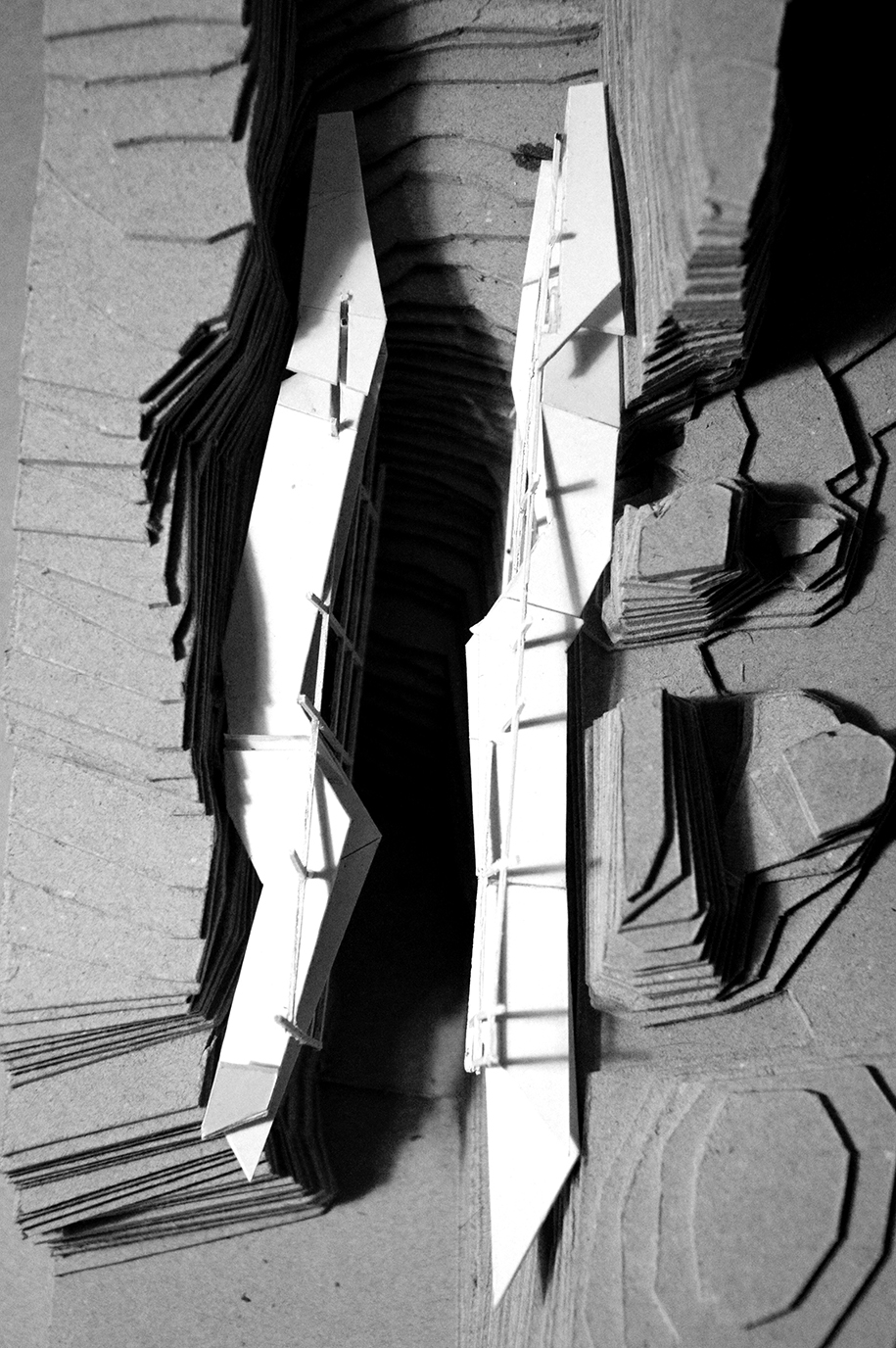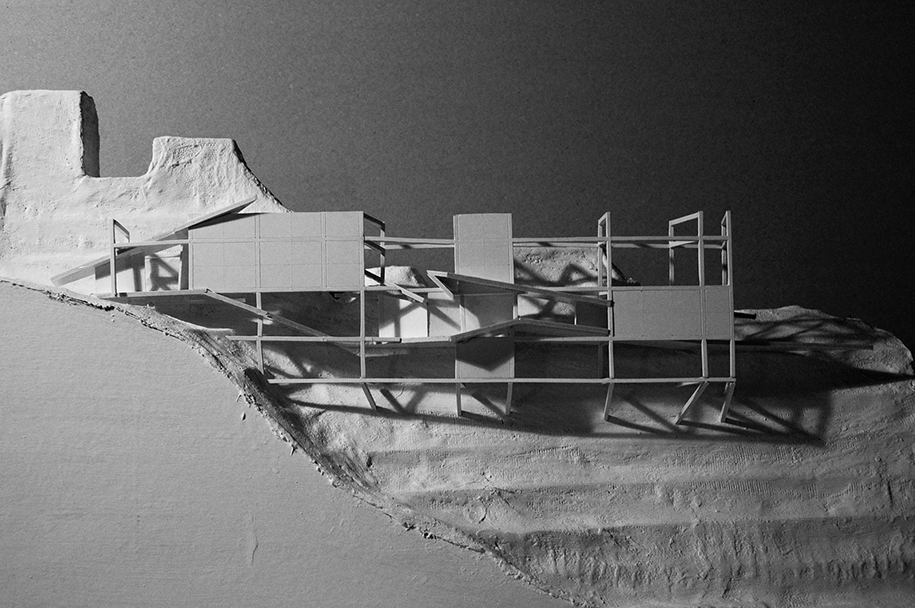The Mixed reality Museum for the ancient Querries of Penteli is a diploma project that attempts to connect ancient anfamous artefacte with the place of their origins, the very marble querries, where first matter was naturally crafted by nature, well before their form was conceived. A such connection is mad epossible thanks to VR technology.
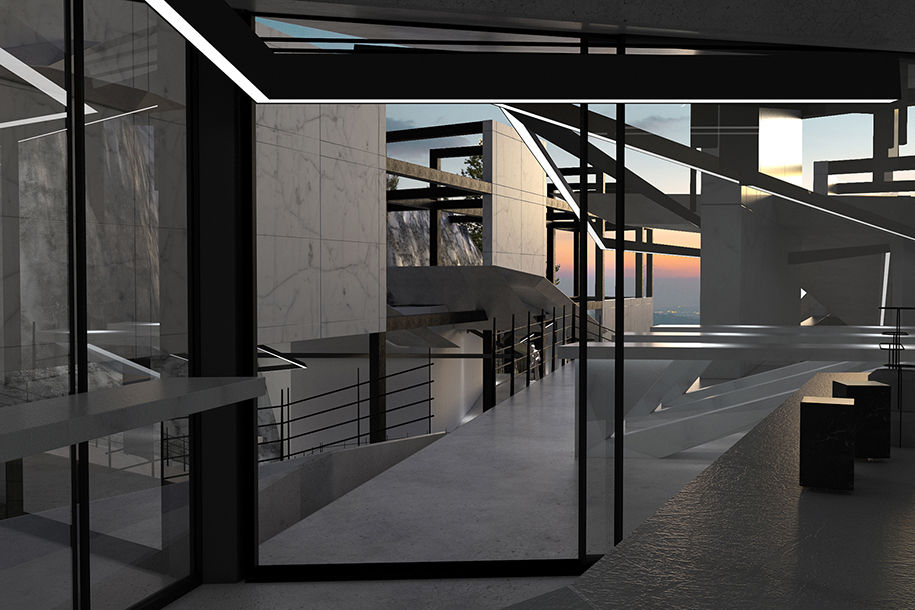
The quarries of Penteli form a vast, complicated network dating back millennia. Some of the most, if not the most, important and iconic architectural buildings of ancient Greece have been extracted from its veins. The Parthenon, the Propylaea, the Thission, the Olympion and the Stadion are some of the examples.
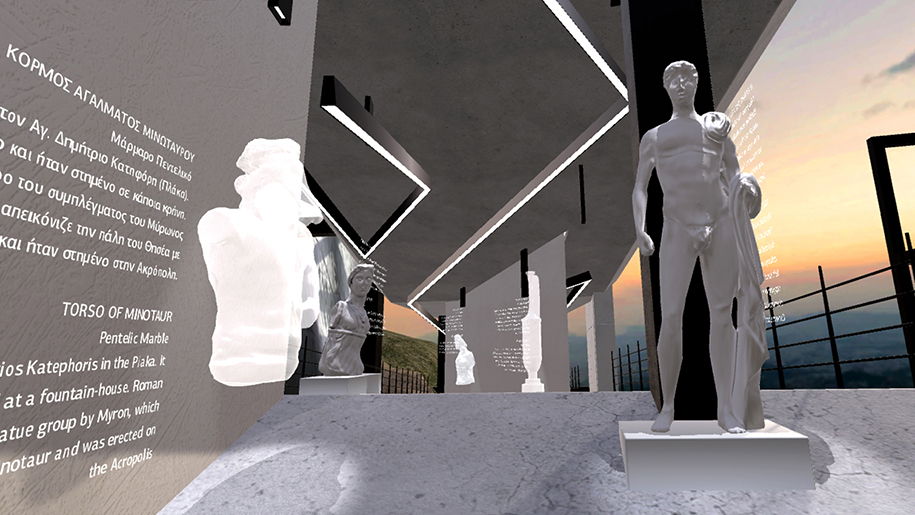
The design intention is to highlight the antithesis between the heavy materiality of the marble, the history formed by it and the technologies which are developed during this period, focusing mainly on Virtual Reality, Augmented Reality and Mixed Reality.
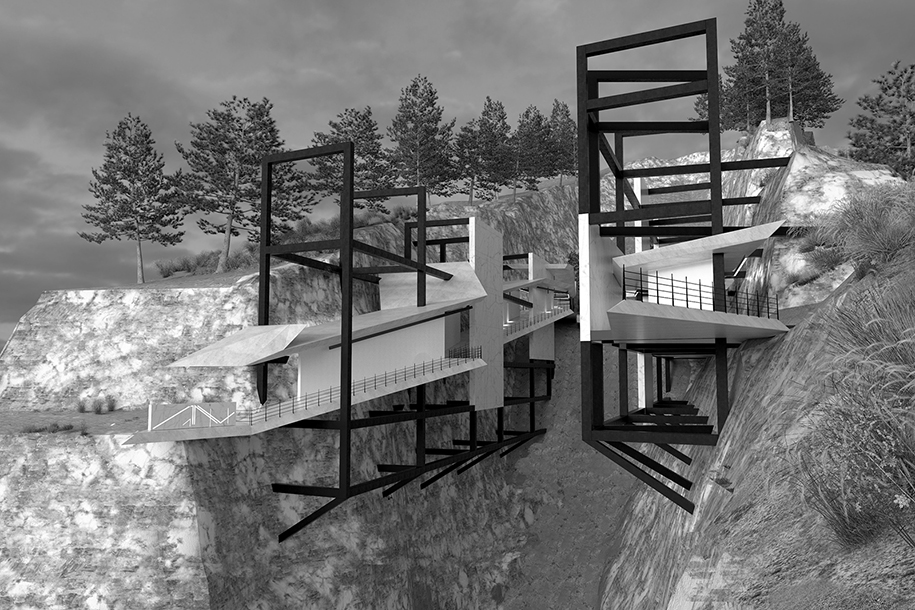
Those technologies also acted as a primary design tool.
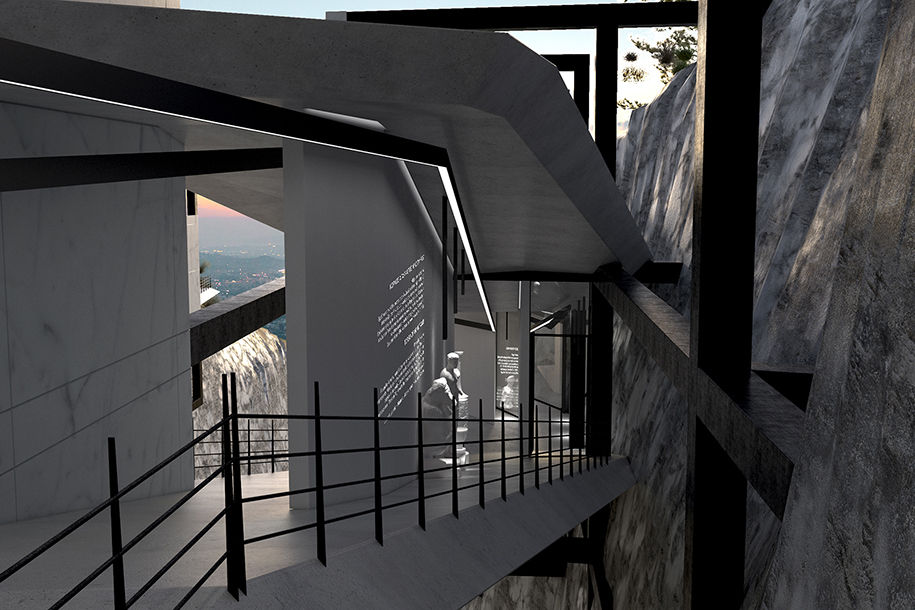
The Mixed Reality Museum visualizes the insertion of such technologies in the museum of the 21st century and examines the practical capabilities of this hybrid with the technological means of today.
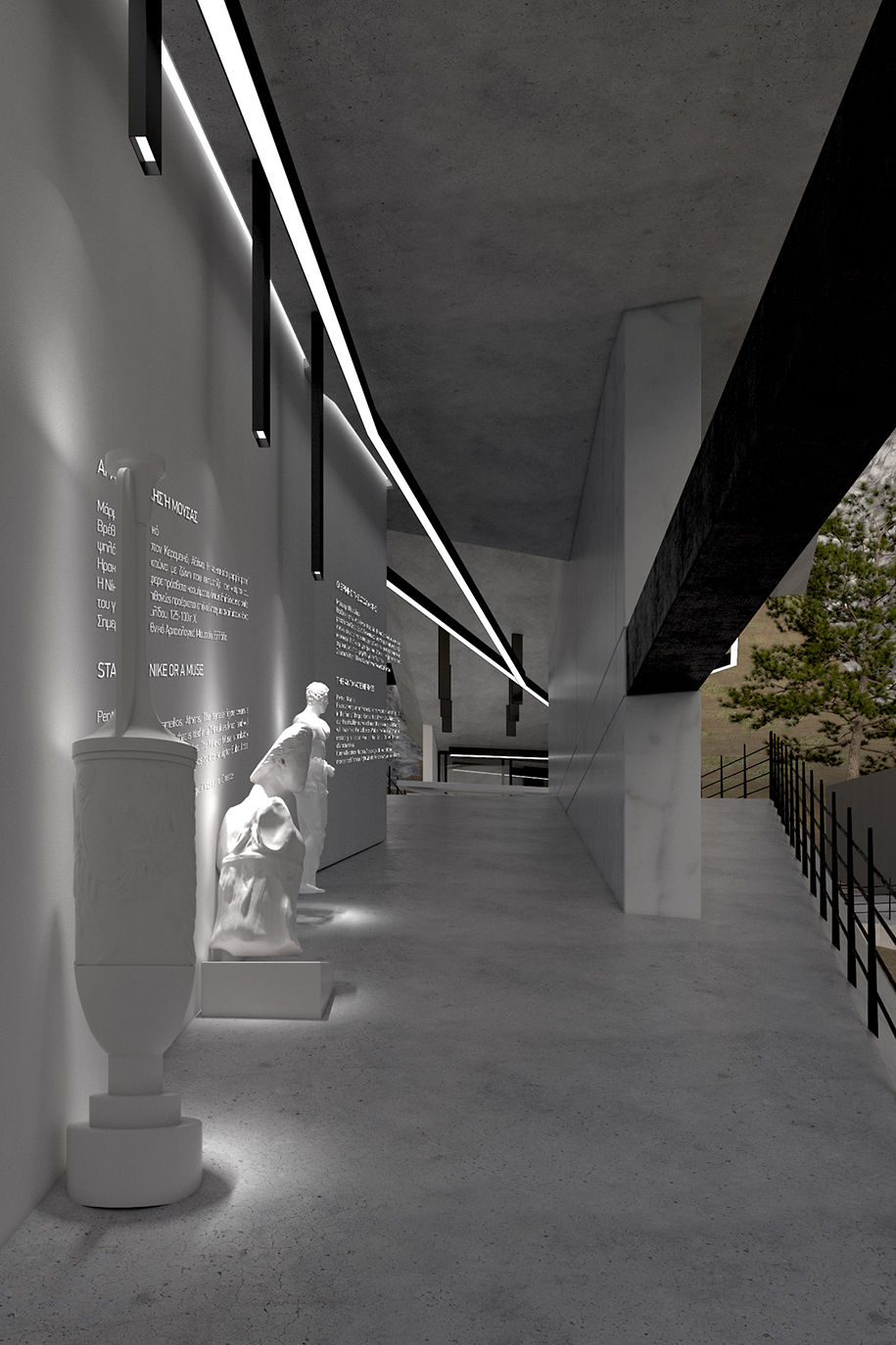
The project was greatly inspired by the antithesis, the symbiosis and the dialog between the natural environment and the human activity.
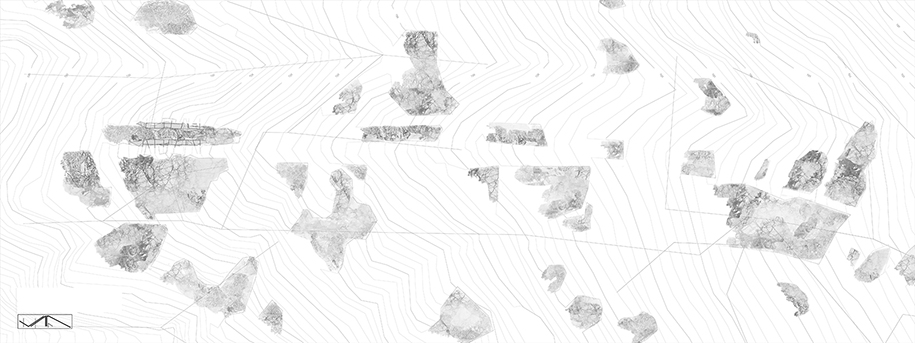
The selected quarry is called Q2 and it is part of the first quarry of Penteli, where Parthenon was extracted from.
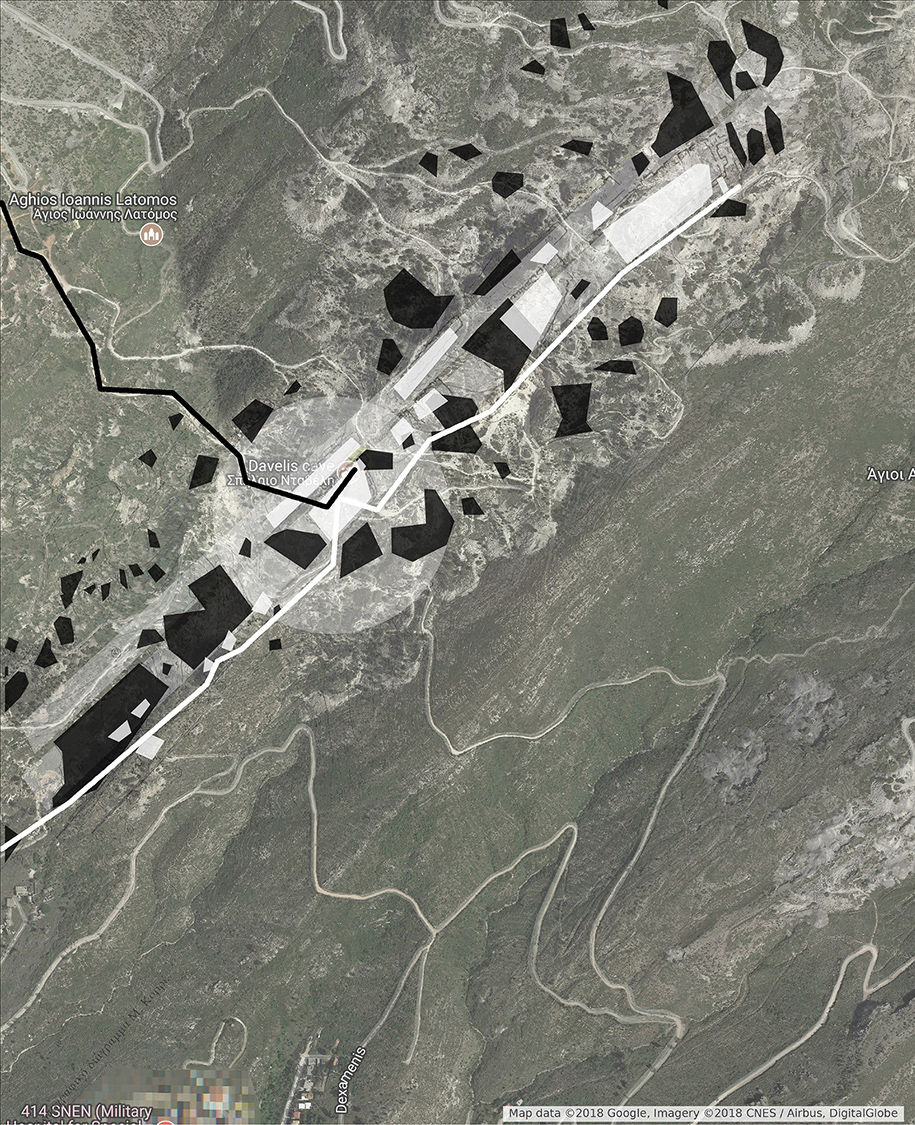
Due to its geological formation and latter illegal exploitation, the sides of the quarry have been deteriorated. The material is present, but the marks of historical extraction have mainly been lost. Instead, due to recent backfills, the ancient layers of earth and breccia must be intact under a thick layer of protection. Such layers may contain more archaeological treasures, left behind due to economic costs and labor difficulties after a defect had been presented, or information about the ancient processes of marble extraction and sculpturing.
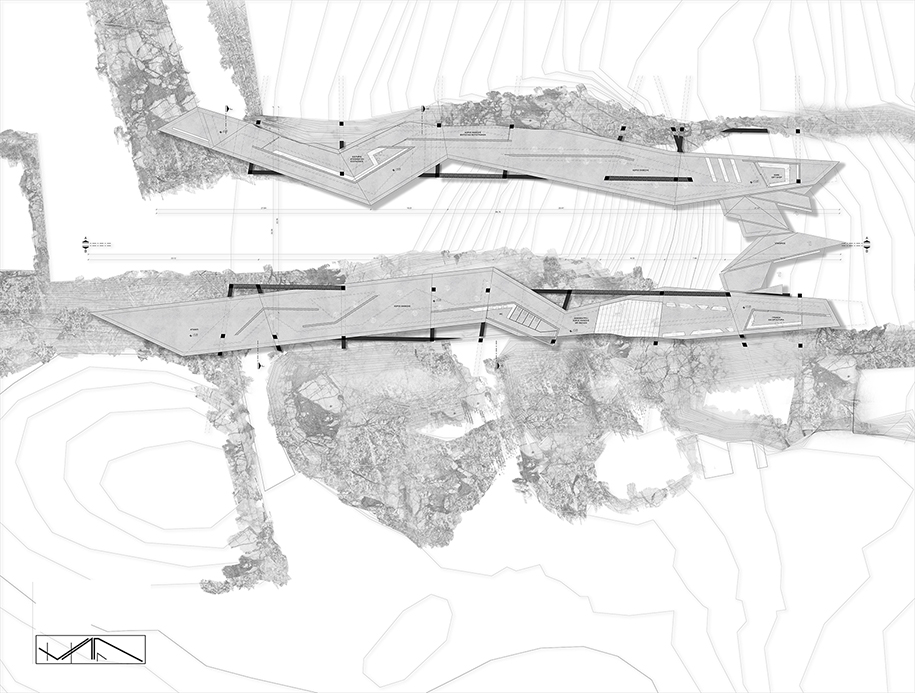
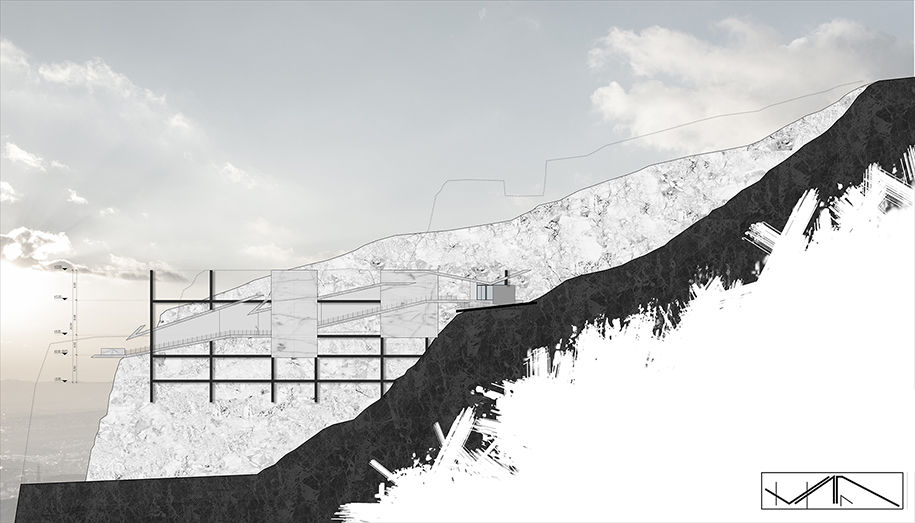
Decisions about the museum:
- The museum must promote and emphasize the antithesis between the natural and the artificial environment
- It should be inserted in the network created by the quarries to promote it
- The construction of the building must be completely reversible. It must respect in the greatest degree the floor of the quarries and, as a result, the buried archaeological treasures that may be existing under it
- The main exhibit of the museum is the marble itself.
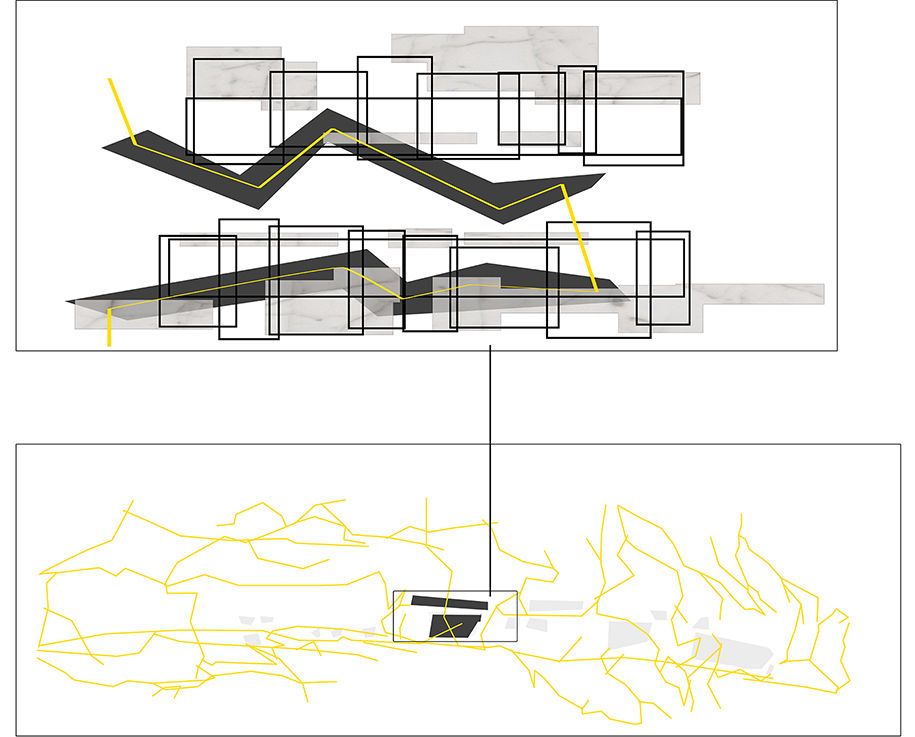
Forming Factors:
- The museum, in an attempt to minimize the corruption of the site, is suspended by the vertical walls of the Great, Trench-like Quarry Q2 and it does not affect the ancient bottom layers of marble segments and gravel
- Its formation by two entities expresses its hybrid character: the exhibition of both physical and digital exhibits. This form also highlights the two great marble veins of the Mt. Penteli were all the quarries were created
- The backfill layers are removed, creating new archaeological excavation sites. Its finds will be added to the collection of the museum
- Its form is expressed as a dialog between a 3D grid – depicting the human factor and based on the ancient gridding system of marble quarrying – and a route in connection with the natural environment and its characteristics, such as steep angles and change of direction
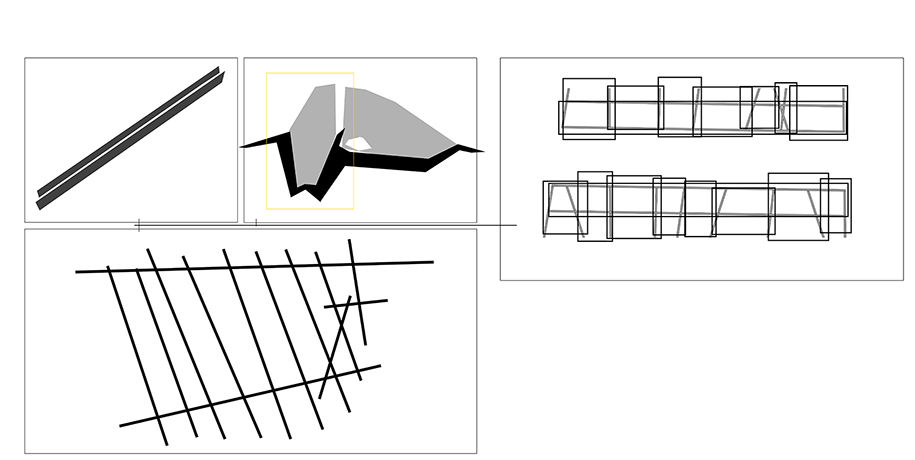
The project presentation was composed by a Virtual Reality Application, drawings, maquettes, a Mixed Reality Application, 3D Printed Models and renders.
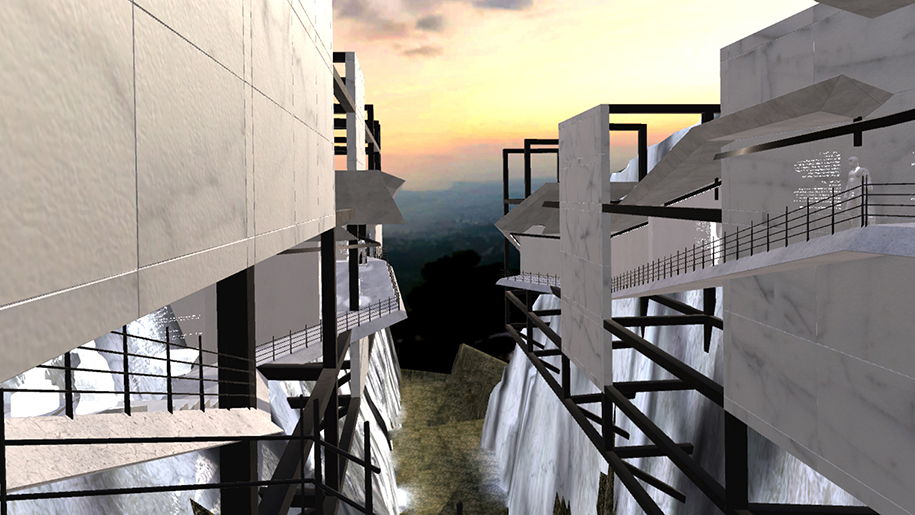
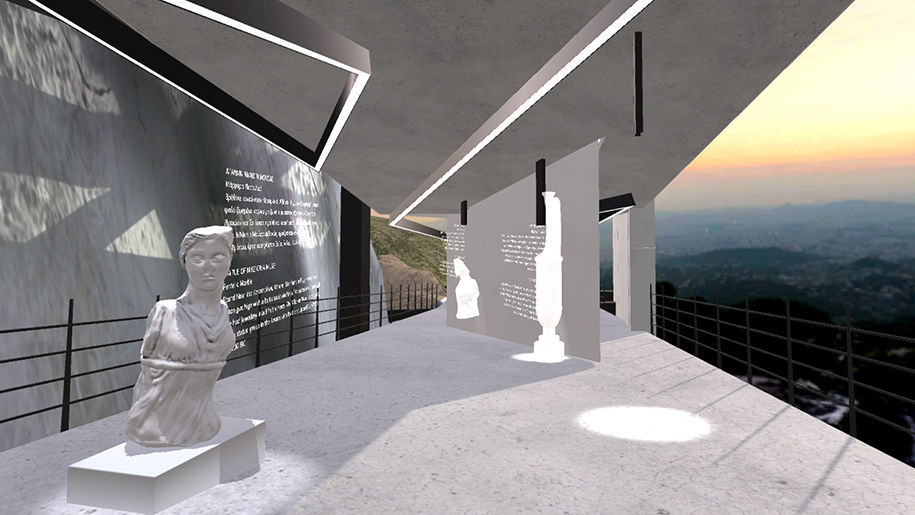
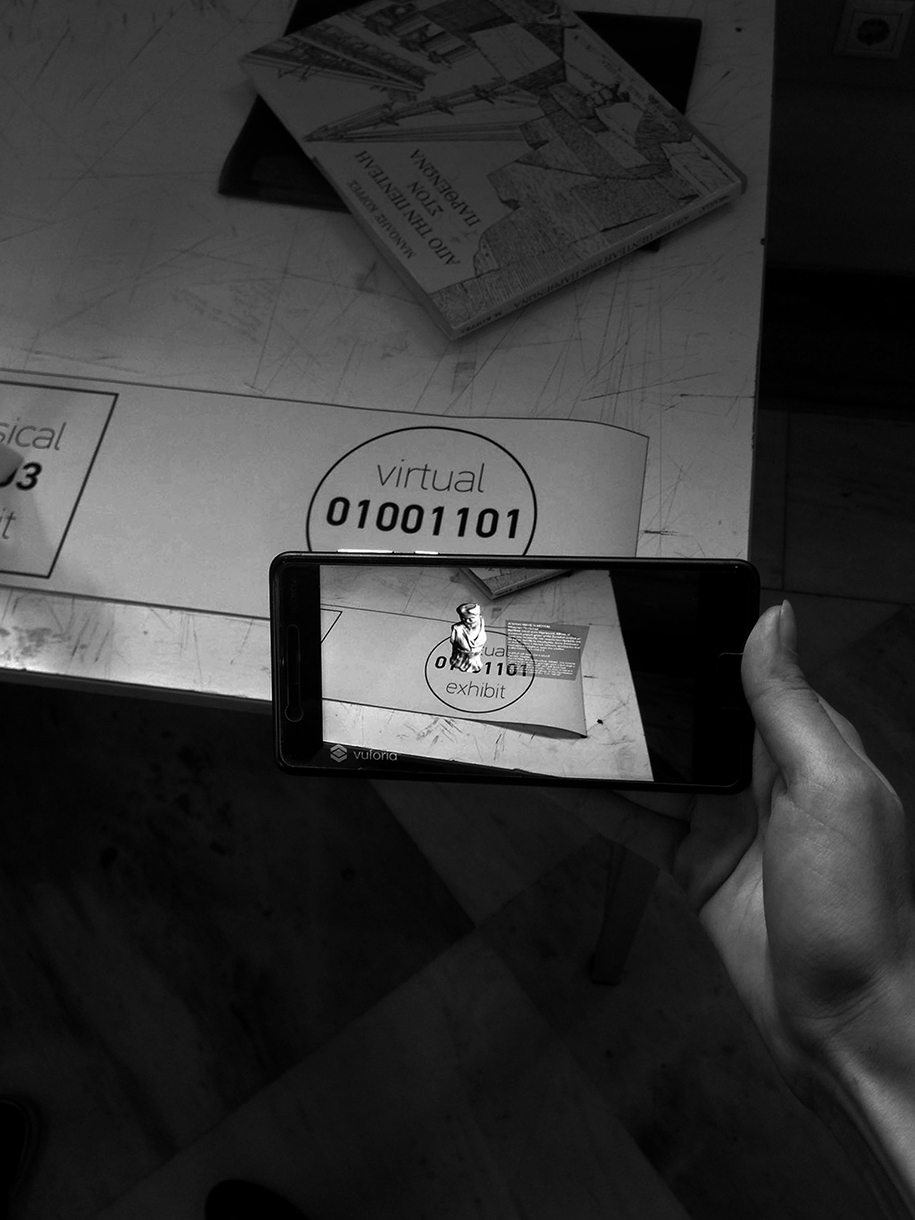
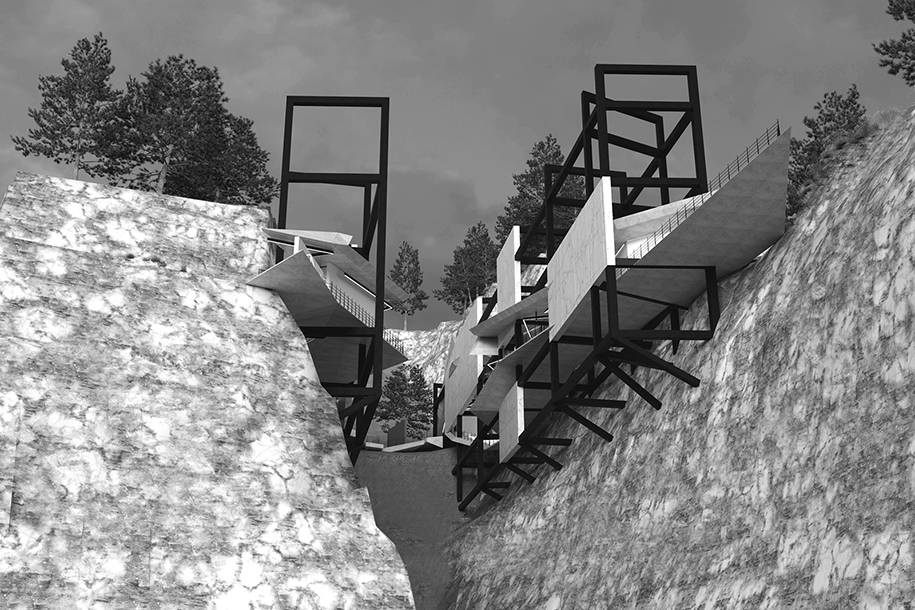
Facts and Credits
Title Mixed Reality Museum for the Ancient Quarries of Penteli
School National Technical University of Athens
Student Giorgos Taliakis
Supervisor Sofia Tsiraki
Date October 2018
See Also: Urban Vegan Factory | Design Project by Vivi Malea, Marianna Mpagordaki, George Pakalidis here!
READ ALSO: LIÒN, a sophisticated restaurant and cocktail bar | COLLIDANIELARCHITETTO
